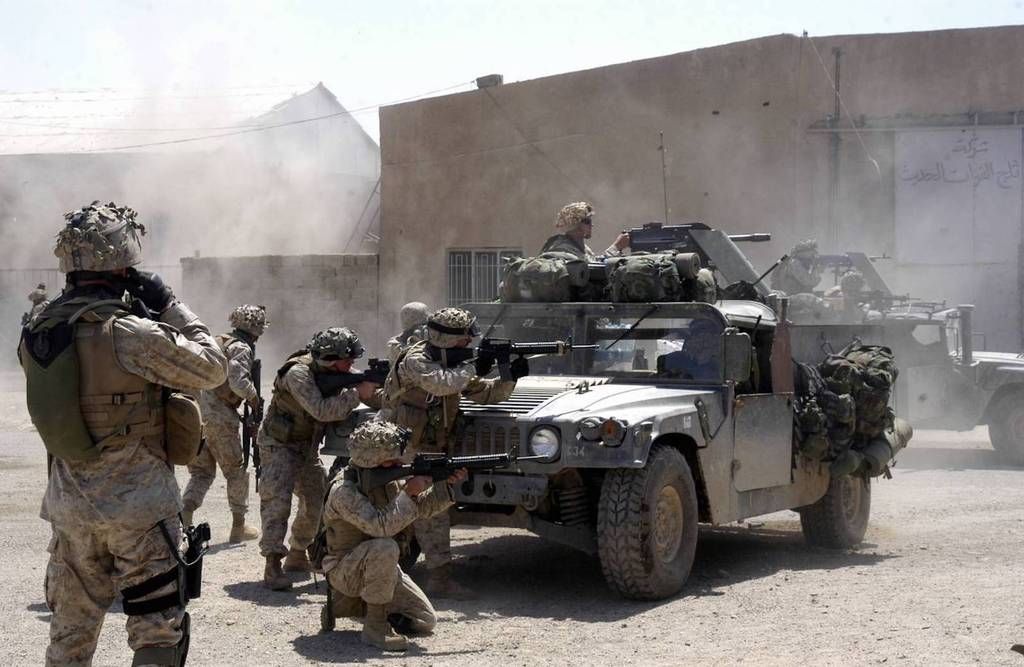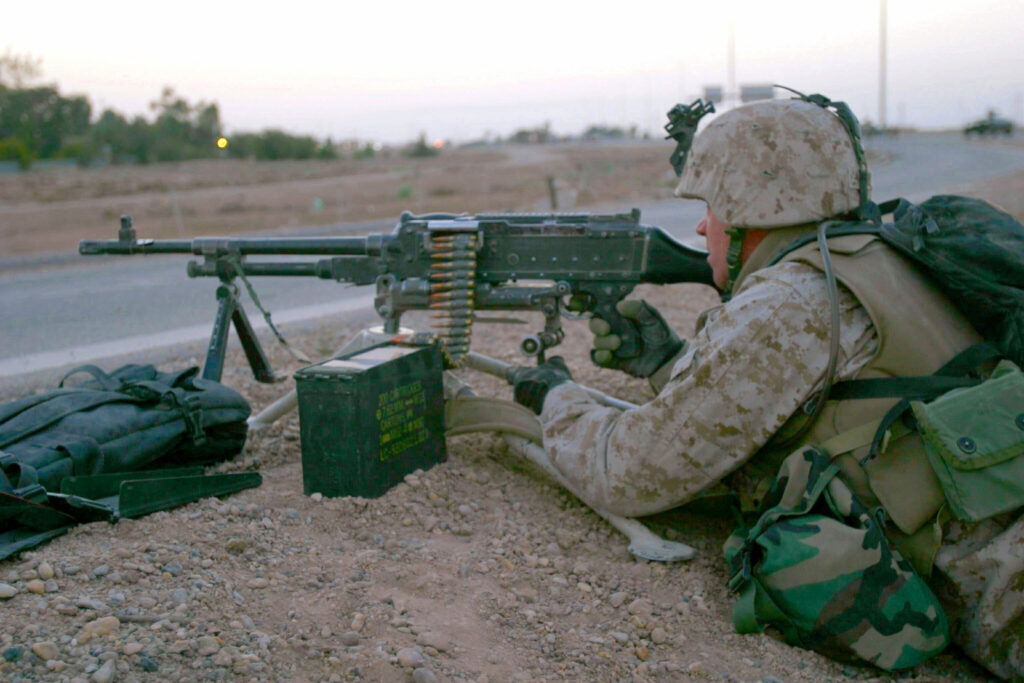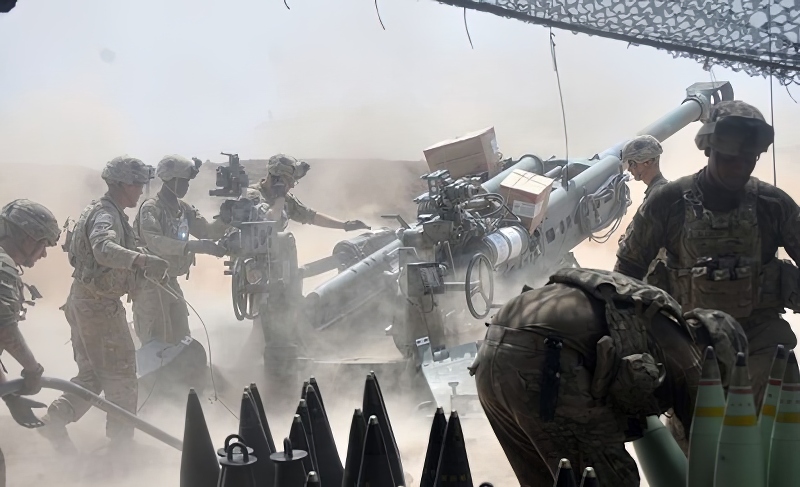In the earliest years of the Iraq War, the city of Fallujah was one of the most contested cities in the country, but it didn’t start out that way. Local citizens had taken control of maintaining order in the city, but a series of misunderstandings between Coalition forces and local leaders soon led to violence and outrage. At the end of March 2004, four private military contractors were massacred and mutilated by insurgents there. The same day, five American soldiers were killed by a massive explosive device near Habbaniyah while en route to Fallujah. The U.S. military decided something needed to be done.

The First Battle of Fallujah: The Surge Begins
On April 4, 2004, the U.S. launched a massive operation to capture or kill those responsible for murdering Blackwater contractors and the five American troops while pacifying the city. An estimated 10,000 troops, including U.S. Army soldiers from the 101st Airborne, 82nd Airborne, 10th Mountain Division, 1st Infantry Division, 3rd Cavalry Regiment, 5th Special Forces Group, and Delta Force operators had tried to pacify Fallujah, but it would be the Marine Corps who entered the city for what was officially known as Operation Vigilant Resolve.
Fallujah was part of the Sunni Triangle, a critical but volatile region in Iraq during the war. It highlighted the complexities and challenges of the post-invasion period, characterized by its predominantly Sunni population, historical ties to Saddam Hussein’s regime, and its role as a center of insurgent activity and violence. The region saw intense fighting and resistance to U.S. and Coalition forces for much of the war.
Responsibility for the city was handed to the 1st Marine Division on March 24, 2004. Less than a week later, the murder of the contractors in Fallujah and the American soldiers in Habbaniyah forced the Marine Corps to make a major effort in the city, which was suddenly a hotbed of insurgent activity. The locals called it “the graveyard of Americans.” Washington gave the Marines 72 hours to mount a response. They were to capture or kill those responsible for the deaths of the Americans, clear out foreign fighters, and remove any heavy weapons.

The Siege of Fallujah Commences
U.S. forces surrounded Fallujah with some 2,000 Marines on April 2, 2004. By the morning of April 5, 2004, the city was cut off from the rest of the country, with all roads blocked. A third of the city had already fled, but Coalition forces dropped leaflets and issued radio broadcasts, asking citizens to stay in their homes and help identify the men who killed the Americans. The city was under siege with an estimated 3,600 insurgents inside, armed with small arms, RPGs, mortars, and anti-aircraft guns.

On the night of April 4, special operations teams began raiding the houses of suspected enemy leaders Marines from 1st Battalion, 5th Marines (1/5), 2nd Battalion, 1st Marines (2/1), the regiment’s supporting tank company, an assault amphibian company, and an artillery battery began the assault on April 5, approaching from the outskirts of Fallujah in a pincers movement, hoping to catch the insurgents inside. What came next would be an intense urban combat campaign over the next five days that American forces hadn’t seen since the Battle of Hue in the Vietnam War.
The First Battle of Fallujah: the Marines Face Stiff Resistance
The Marines didn’t really know how many enemy fighters they were up against because the deadline to fight back from Washington didn’t give them time to prepare an adequate intelligence assessment. All they knew was they could be fighting anywhere from 500 to 6,000 enemy fighters. When the shooting started, the Marines faced stiff resistance and a surprisingly capable enemy. They could swarm positions, fight in coordinated teams, and effectively maneuver throughout the city. Their only trump card over the insurgency was the air and artillery fire support.

The fighting was house-to-house, as U.S. troops called in air strikes from AC-130 gunships’ howitzer and gatling guns, along with F-16 Fighting Falcons and Cobra helicopter gunships.. Within three days, the Americans controlled a quarter of the city, but the resistance wasn’t crumbling – they knew time was on their side if they could hold out. They began a disinformation campaign, claiming the Americans were effectively destroying much of the city and haphazardly killing civilians.
Meanwhile, as the fighting raged on, other cities in Iraq began to rise up. In Baghdad, followers of the Shia cleric Muqtada al-Sadr began reprisal attacks against Coalition forces. This militia would soon be known as the Mahdi Army and would be the main anti-Coalition militia in Iraq until it was disbanded in 2008. In Ramadi, another city in the Sunni Triangle, Sunni fighters would increase their resistance to American control. Other cities like Mosul and Najaf also saw an uptick in violence. The Iraqi Governing Council eventually had enough of the widespread violence and demanded the Marines call a ceasefire in Fallujah on April 9, 2004.
Humanitarian aid poured into the city over the next three weeks as the Marines continued their sporadic fighting with Fallujah’s insurgents. Iraq estimated 600 civilians died in the month-long battle, while the United States lost 39 killed and 37 wounded. The provisional Iraqi government forced the Marines to leave the city and hand responsibility off to the Iraqi Fallujah Brigade, a newly created force of Sunni Iraqis. The Marines were skeptical about the reliability of such a force but withdrew anyway.
The First Battle of Fallujah was a loss for the Americans, but not because of the Marines’ fighting ability. They were forced to engage a target without adequate intelligence or planning. They were also restricted in the number and power of reinforcements available to them. Finally, the American political leadership did not have the will to see the battle through to the end in the face of insurgent misinformation.
Read About Other Battlefield Chronicles
If you enjoyed learning about the First Battle of Fallujah, we invite you to read about other battlefield chronicles on our blog. You will also find military book reviews, veterans’ service reflections, famous military units and more on the TogetherWeServed.com blog. If you are a veteran, find your military buddies, view historic boot camp photos, build a printable military service plaque, and more on TogetherWeServed.com today.

Sounds Like Vietnam all over again,they didn’t let us complete the Mission!!!!